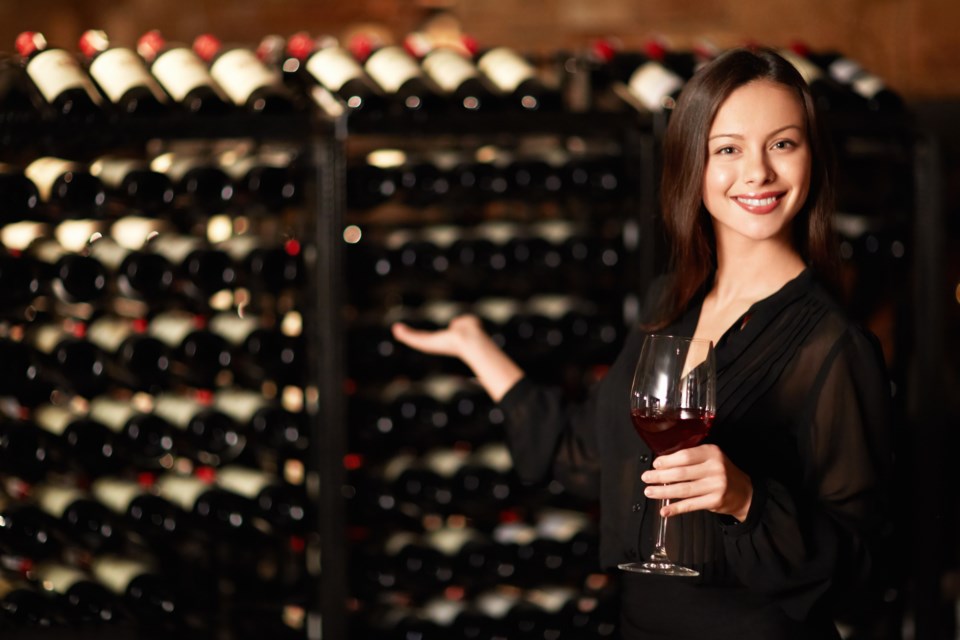From time to time, I am asked if I am a sommelier. I’m not, but it might be helpful to consider just what it means to be a Sommelier, and, by extension, either a Master Sommelier or a Master of Wine.
Not that many years ago, most people may not even have heard of the term, but today it commonly appears in conversations about wine, particularly wine in restaurants.
I have even heard of the term being appropriated to refer to expertise with respect to other commodities, such as coffee or cheese, or even cigars.
The term, “sommelier”, appears to have been derived from an old French word for pack animal, and it referred to the person who took care of the animals and their cargos.
In that a cargo wasn’t necessarily wine, there could be legitimate grounds for associating the term with other type of consumables.
Today, a sommelier is most commonly a person who has cultivated a significant knowledge of wine and its service. It is someone who can help clients choose the wine that will best suit their tastes, their meal choice, and their budgets. A sommelier should also know how to present and serve wines, and how to serve customers.
In this respect, the term “wine steward” might be used interchangeably.
There are educational options by which a person could become an accredited sommelier.
The Canadian Association of Professional Sommeliers has a certification program that is delivered at both George Brown College and Niagara College. There is rigour here, as the six modules involve over 250 hours of instruction in areas including methods of production, wine styles, old world and new world wines, and ‘sommelier management’. P.S. A sommelier also has to be knowledgeable about beer, spirits, and perhaps even cigars!
In addition, it is suggested that candidates put in at least 20 hours of study on their own per unit, as well as participate in a study group. They are also expected to put in at least 60 hours – usually unpaid - working in industry with a qualified mentor.
For the most serious, there is the Master Sommelier Certification. Achieving this demands blood sweat and tears, not to mention lots and lots of time. Along the way, a candidate is tested on theoretical knowledge, tasting, and service.
Peter Marks, a Master of Wine, tells candidates to be prepared to follow Malcolm Gladwell’s (Outlier) ten thousand hour rule: in order to achieve world-class mastery of anything, expect to put in that many hours of practice!
Recently, candidates in the United States underwent the MS exams, only to be told subsequently that someone had passed answers to some of the applicants. The results were wiped out, including those for people who had passed in all honesty. For them, this was devastating.
They had spent years preparing – and a lot of money. They had careers that depended on their being qualified, and that was all put in jeopardy. Many try the exams several times before they succeed, and though the students were being allowed to re-write at no cost, there was no guarantee that they would be successful the next time round. Since then, some have re-written, and some who had passed, failed.
Being a Master Sommelier is very serious business.
I don’t expect to encounter many Master Sommeliers as I go along, even though restaurants with serious wine lists should have a capable wine steward.
What I hope for is that restaurants will take their wine lists and wine service seriously. At the very least, there should always be someone available who knows the list and which wines would go best with which dishes on the menu.
In most cases, the more every waiter or waitress knows in that regard, the better. Restaurateurs should train them.
Knowledgeable wait-staff can make the dining experience better for the customers, and in the process will help to increase the sale of good wines. This will likely keep good bottles from gathering dust, improving the bottom-line for the restaurant.
A good sommelier doesn’t try to sell the most expensive wines on the list; he or she tries to find the best fit for the customers. Sometimes, he or she can steer them toward a wine they might not really have considered, and which, to their surprise, they end up finding a perfect fit. Ya gotta love it.
Besides the Master Sommelier qualification, there is also Master of Wine. Much of the knowledge can overlap, but an MW likely needs to have deeper background knowledge of wine regions and wine history, while the “Somm”, as some like to abbreviate it, will be far more cognizant of how to serve wine and pair it with food.
In the best restaurants, it is also the significant responsibility of the sommelier to address the selection and cellaring of wines for the wine list.
I love my wine, and I love learning more about it all the time. In the meantime, I will leave the demanding qualifications to those for whom it makes best sense – and admire them for it.
Limited Time Offers
Each month, the LCBO discounts a number of products, with wines usually $1 to $3 off. Many of the usual suspects keep popping up every other month or so, but there are always a few that can catch one’s eye. The current period runs until February 3.
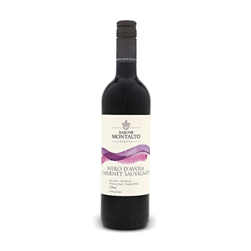 The Montalto Nero d’Avola/Cabernet Ter Siciliane IGT is $1 off, and now sells for just $8.55
The Montalto Nero d’Avola/Cabernet Ter Siciliane IGT is $1 off, and now sells for just $8.55The companion Montalto Pinot Grigio, $10, though not an LTO, was equally praised. It was described as being “a rich and layered pinot grigio with charming white floral notes and vibrant acidity.” Again, 93.
Deakin Estate Shiraz, $1 off at $8.95, offers excellent value, too. This wine from Victoria in Australia, has won a few medals, and is easy drinking with dark fruit and peppery spice notes.
Ontario’s Southbrook Connect White, $2 off at $13.95, is a fine organic white with purity of fruit. Vidal, a hybrid that has done really well in Ontario, figures prominently in this blend. Peach, ripe apple, melon, and a kiss of honey characterize the flavour profile, and the 10% of sugar is balanced off nicely with a finishing citrus zip
Whenever I see a wine labelled “Red Blend”, I automatically check the sugar content. I find that with blends it can often creep into the mid-teens and higher: perfect for some, less so for others. The current LTO list contains many such wines.
Ménage à Trois Silk Blend, $2 off at $15.95 is a Californian blend of Pinot Noir, Malbec, and Petite Sirah, and clocks in at 14 grams of sugar per litre. It promises fresh, sweet cherry and raspberry flavours, along with “rose petals and toasty spice.”
The northern Italian Roscato Dark Blend, $2 off for $13.95 comes in even higher on the sweetness scale at 20 grams per litre. The grapes include the indigenous Teroldego and Lagrein, along with Merlot. The producers suggest that it will provide “a pleasing, well-balanced taste with soft tannins [along] with marked overtones of black fruits (blackberry and plum) combined with hints of coffee and chocolate.” There is no question that the sweetness can help with the rough edges; it is just a question of balance, ultimately, and preference.
Apothic Red, one of the original blends to hit the market, has 19 grams per litre of sugar; however, two of its siblings, Apothic Dark Red and Apothic Crush – both $2 off at $14.95 – actually are far lower in sweetness at 8 grams per litre and 10 grams respectively.
Both these wines accentuate lush fruit. The Dark Red is said to present blueberry and blackberry fruit, along with, dark chocolate and coffee, while the Apothic Crush is promoted as exhibiting red fruit, caramel and chocolate. Both will have a wisp of sweetness, and will come across as smooth.
The Apothic White, also $2 off at $14.95, is a blend of Riesling, Chardonnay and Pinot Grigio. Here, expect stone fruit in a wine that is medium sweet, (19 grams of sugar per litre) but carries decent acidity, thanks to the Riesling and the Pinot Grigio.
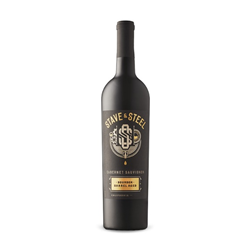 Stave & Steel Cabernet Sauvignon, now $3 off at $15.95
Stave & Steel Cabernet Sauvignon, now $3 off at $15.95Though not on the LTO list for February, the 2017 vintage of the Robert Mondavi Fumé Blanc, $22.95, is now in stores. Mondavi pioneered this style of Sauvignon Blanc which includes 15% Semillon. 90% barrel-fermented, it also spends 6 months in French oak to develop a creamy texture. It has the gooseberry element common to Sauvignon Blanc, but there is also a richness of flavour and a satisfying note of herb and citrus pith on the finish. The acidity is brisk, making this a perfect wine to have in hand when the weather warms up. Right now, it will serve very well with that baked salmon you’ve been planning to serve this coming week!
Jan. 19 Vintages Release
White
Villa Wolf Pinot Gris 2017, $14.95, is a Loosen Brothers wine from the Pfalz region in Germany. The 2015 was a ‘top value’ plump and crisp wine for the Wine Enthusiast, and we can expect comparable quality here. You should find apricot-like fruit, good acidity, and a rich texture due to the 10 grams of sugar per litre.
Gérard Bertrand Réserve Spéciale Viognier 2016, $14.95, presents peach and pineapple in a creamy texture at the outset, following it with a resolving crisp citrus finish. In all, an intense and flavourful wine perfect for fish or fowl.
Gorgo San Michelin Custoza 2017, $16.95, is from Italy’s Veneto region. The vines grow in rocky, calcerous soil, and the wine exhibits both stone fruit (peach, nectarine), salinity, and savoury elements – anise? An impressive, well-made wine.
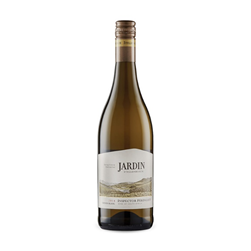 Jardin Inspector Péringuey Chenin Blanc 2016, $17.95
Jardin Inspector Péringuey Chenin Blanc 2016, $17.95Red
S. Sebastião Tinta Roriz/Syrah 2015, $12.95, combines the native Portuguese Tinta Roriz with Syrah in a very effective and inexpensive red. Vintages mentions “crushed blackberry and shaved truffle”, and so we can expect good dark fruit with earthy overtones. It is structured and quite impressive for the price.
Sinergia Cabernet Sauvignon 2014, $14.95, is from Valencia in Spain. According to the Wine Enthusiast, “blackberry and toasty flavors of chocolate and brown sugar smolder across a strident finish.” - 92
Montes Limited Selection Pinot Noir 2016, $14.95 – From Chile, this wine might be hard to resist at the price, but it is not typical Pinot. Reviews speak about dried strawberry and earthy, woodsy tones –cedar – along with spice (clove?). You may find it “the bee’s knees”, or you may just feel stung.
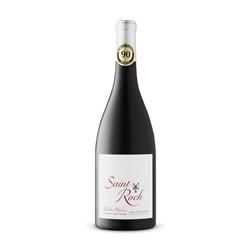 Saint-Roch Vielles Vignes Syrah/Grenache 2015, $16.95
Saint-Roch Vielles Vignes Syrah/Grenache 2015, $16.95La Loggia Uvario Rosso Toscano 2016, $20.95 is an Italian red new to Vintages. Reviewer Luca Maroni was head over heels for this wine, writing “a total and harmonious fusion between acidity, tannic density and mellowness. The purity of the fruit is also exquisite in this flawless wine… Certainly among the best reds of the year, it is a paragon of infinite density and silkiness.” -98.
You may have to try to order this wine in: from France’s Languedoc, Domaine Lerys Pur Schistes Fitou 2015, $20.95, carries the full 3 stars from France’s respected Guide Hachette, which suggests that “anchored by flavours of nutmeg, tapenade and dark fruit, the mouthfeel has ample volume – opulent, ripe fleshy and accompanied by soft tannins.”
Drink well.
